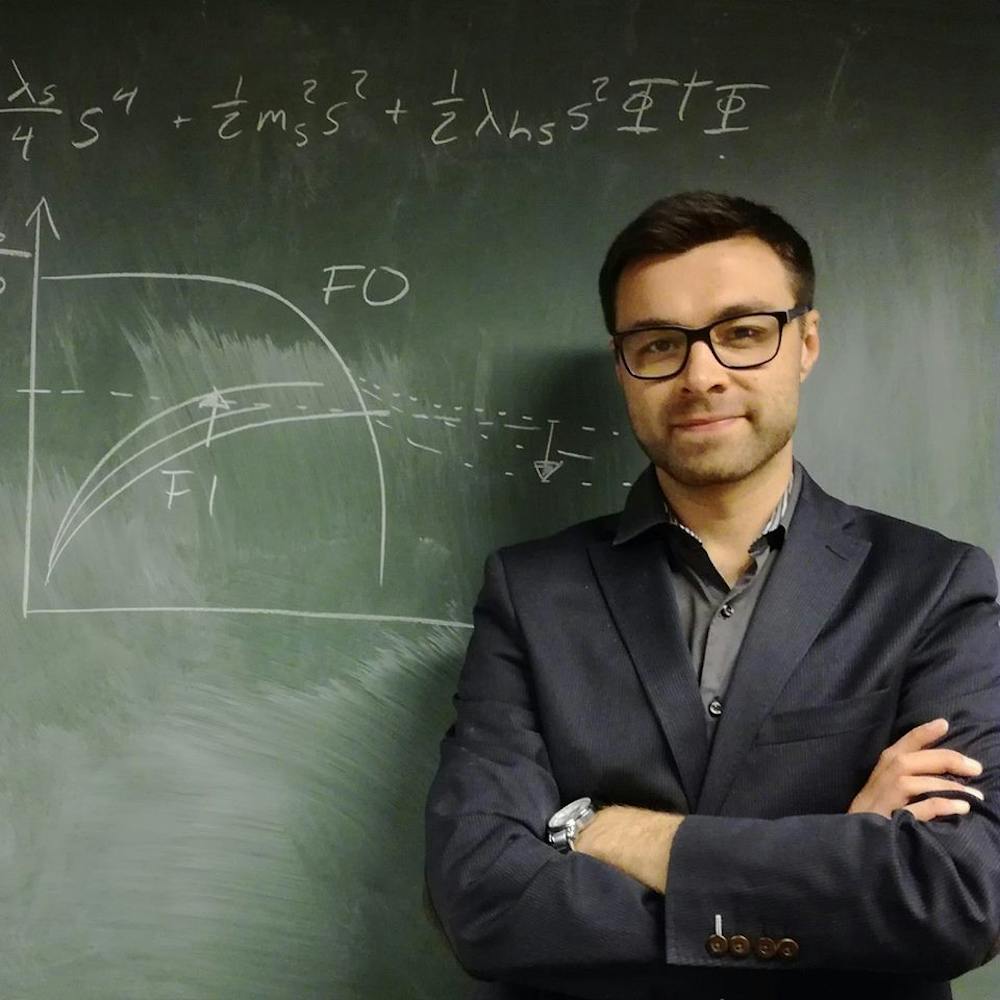To understand the workings of the ‘body’ of the universe, it is necessary to understand its skeleton: dark matter. Enter Tommi Tenkanen, a postdoctoral fellow in the Department of Physics and Astronomy, who recently proposed a mathematical calculation to support the claim that dark matter predates the Big Bang.
In an email to The News-Letter, Tenkanen explained that dark matter is essentially an attractive force that plays a part in holding galaxies together while affecting the way they move in space. Dark matter doesn’t emit, reflect or absorb light, so, Tenkanen noted, perhaps a more appropriate moniker for it would be “transparent matter.”
The deeper nature of dark matter still eludes scientists. Yet dark matter is ubiquitous — it is thought to make up more than 80 percent of the total matter in the universe. It has left its imprint in the dynamics of stars within galaxies and the cosmic microwave background radiation, which Tenkanen described as the “afterglow of the Big Bang epoch.”
Previous studies on dark matter assumed that its constituent particles, known as axions, were very light. Tenkanen, however, has demonstrated that if heavy axion-like particles exist, there is potential for much more interesting events to have taken place during the cosmic inflation before the Big Bang.
His inspiration for the theory dates back to his time at Imperial College London in the UK. Tenkanen and his collaborators showed that if axion-like particles are “self-interacting,” in other words, if they can sense each others’ presence, then the axions can become heavy. The heaviness in turn can provide an interesting production mechanism for dark matter.
“People thought that this production mechanism for dark matter did not have any observable consequences, that is, that there would be no way to test it. In my paper I was able to show that there actually is,” Tenkanen wrote in an email to The News-Letter.
Some others had studied ways to make axions heavy during cosmic inflation, but the calculations required multiple assumptions about the forces at play. The advantage in Tenkanen’s calculation lies in the fact that it does not introduce the existence of any new forces.
Tenkanen’s mathematical model is derived from multiple models, the simplest of which theoretical physicists call a “toy model.” The “toy model” is a deliberately simplistic model used to concisely explain a mechanism — in other words, it is a proof of principle that something can work.
Tenkanen hopes that even this simplistic model is able to capture the key points of dark matter origination. Tenkanen’s models predict that the number of galaxies in the universe is higher than the current model — which shows dark matter to have arisen during the Big Bang — predicts.
Tenkanen’s own interest in cosmology, astrophysics and particle physics stems from his upbringing in the Finnish countryside where he could easily see starry skies and occasionally even view the Aurora Borealis. His exposure to this natural beauty led him to question the way in which nature works — questions whose answers could be found in the fields of particle physics and cosmology.
“In particle physics, one studies the elementary building blocks of nature, while cosmology is a discipline which studies the universe as a whole,” Tenkanen wrote. “In a way, [particle physics and cosmology] constitute the art of everything that exists.”
Theorists like Tenkanen and his collaborators test their ideas on computer simulations or even through pen-and-paper calculations. Tenkanen stressed that experimentation and application of theories is key; he does not want his ideas to simply occupy the realm of the abstract, so conversation with colleagues is essential.
“It is important that everything we do does not remain just hypothesis and mathematical calculations,” Tenkanen said. “This is why we very often compare the results of our calculations to what experimentalists have measured, or try to predict something new that, for example, astronomers can observe.”
Tenkanen hopes that his theory will be validated by the data collected by the Euclid satellite, which is set to launch in 2022. The satellite will record the amount and distribution of matter in space which will help to clarify how dark matter has affected the evolution of the structure of the universe. According to Tenkanen, the satellite would make it possible to visualize the universe as it was before the Big Bang.
For readers interested in learning more about dark matter, Tenkanen suggests reading The Cosmic Cocktail: Three Parts Dark Matter written by Katherine Freese. The book describes the scientific community’s current understanding of dark matter and current approaches to studying it.
Those who know how to read Finnish can also read Tenkanen’s own book, which will be published in October. In the meantime, scientists can only wait for more breakthroughs to further our understanding of a substance which surrounds all of us.





